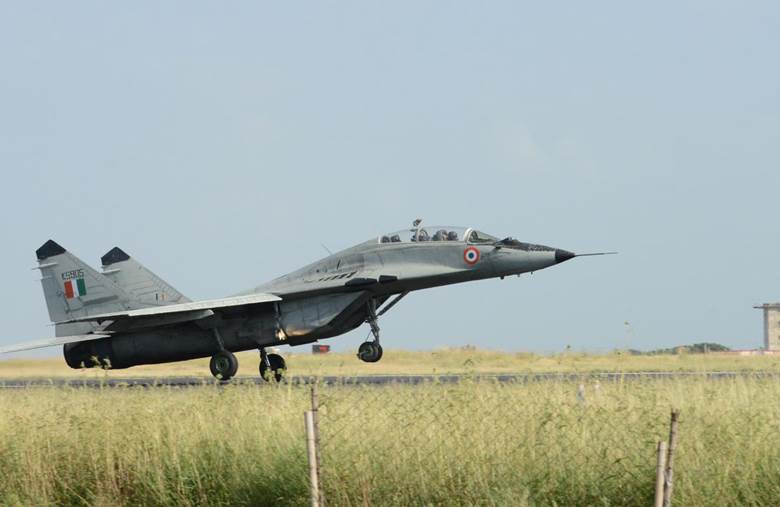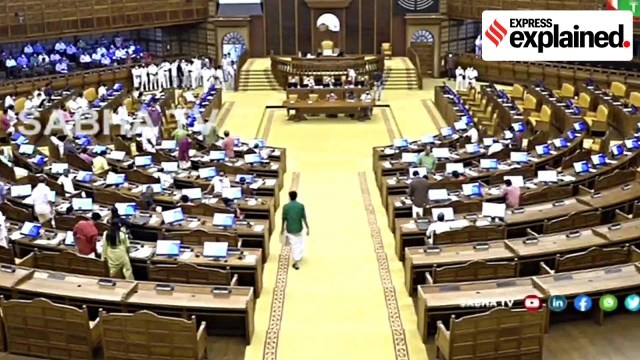Description

Copyright infringement not intended
Context: As the war in Ukraine stretches over four months with no end in sight, it has given rise to apprehensions on Russia’s ability to adhere to timely deliveries of spares and hardware.
What is the status of India-Russia defence cooperation?
- When the war began, the Indian armed forces have stocks of spares and supplies for eight to ten months and the expectation was that the war would end quickly.
- However, as it stretches on with no clear endgame, there are apprehensions on Russia’s ability to adhere to the timelines for both spares as well as new deliveries.
- Army Chief Manoj Pande acknowledged the Army’s dependency on certain weapon systems specially in the area of air defence, rockets, missiles and certain tanks from Russia and Ukraine and said that as far as the immediate impact was concerned “the supply chain of certain spares and ammunition has got impacted to some extent, but we have adequate stocks to last for a reasonable period of time.”
- He added that they are also looking at certain alternative mitigation measures and identifying alternate sources from friendly foreign countries while in the long term, this is also an opportunity for the private industry to step up production and meet the requirements.
- Officials have stated that while some timeline lapses and shipping delays were possible, there would not be any dent on the Army’s operational preparedness along the borders especially the Line of Actual Control.
- In addition, the armed forces have also made significant emergency procurements in the last two years since the standoff in Eastern Ladakh and have stocked up on spares and ammunition. Therefore, there shouldn't be any immediate urgency for spares and other requirements.
- Russia has assured India that it would adhere to delivery timelines. However, as the war stretches on there are apprehensions that it could have an impact as the Russian industry would be caught up in replenishing the inventories of their own armed forces.
What is the status of deals underway/new deals pending with Russia?
- The defence trade between India and Russia has crossed $15 billion since 2018, in the backdrop of some big deals including the $5.43 billion S-400 long-range air defence systems.
- Other major contracts currently under implementation are the construction of four additional stealth frigates in Russia and India, licensed production of the Mango Armor-piercing fin-stabilised discarding sabot (APFSDS) rounds for the T-90S tanks as also additional T-90S tanks, AK-203 assault rifles among others.
- However, there is some delay. For instance, the delivery of the second regiment of the S-400 is delayed by a few months as also the operationalisation of the agreement for the manufacture of 6.1 lakh AK-203 rifles at Korwa, Amethi in Uttar Pradesh.
- There are also several big ticket deals currently under negotiation but several of them have been deferred by the Defence Ministry as part of the review of all direct import deals.
- This is in conjunction with efforts to push the ‘Make in India’ scheme in defence. Russian deals have also been deferred including the one for 21 MiG-29 fighter jets for the Indian Air Force (IAF) along with the upgradation of 59 existing Mig-29 jets estimated to cost ₹7,418 crore and the manufacture of 12 SU-30 MKI aircraft at an estimated ₹10,730 crore by Hindustan Aeronautics Limited (HAL).
- Another long pending deal is for the manufacture of 200 K-226T utility helicopters in India
- In addition, a deal for six Ka-31 early warning helicopters and a bigger deal for Igla-S very short range air defence systems have also been deferred though the Army inducted a small number of Igla-S systems brought under emergency procurement.
What is the status of payments?
- With Russia being shut out of the global SWIFT system for money transfers, India and Russia have agreed to conduct payments through the Rupee-Rouble arrangement.
- With several big ticket deals including the S-400 under implementation, there are large volume of payments to be made.
- The Central banks of the two countries had extensively discussed this issue, and officials recently said that small payments have been resumed and work is on to resolve larger payments. For the two countries, payments by the Rupee-Rouble arrangement is not new.
- For instance, for the S-400 air defence systems signed in October 2018, with the looming threat of U.S. sanctions under CAATSA (Countering America’s Adversaries Through Sanctions Act), the two sides had worked out payments through the Rupee-Rouble exchange.
- In fact, the delivery schedule got slightly delayed as the payment was tied up. However, at that time Russia was within the SWIFT system.
- While India continues to remain Russia’s largest arms buyer with a major chunk of legacy hardware from Russia and the Soviet Union, the volume of imports has reduced in the last decade.

Copyright infringement is not intended
Russia-Traditional military supplier:
- Russia has been a traditional military supplier, over 60% of Indian military inventory is of Russian origin, including fighter jets, tanks, helicopters and submarines.
- In 2021, India and Russia signed a ₹5000 crore deal for 6.1 lakh AK-203 assault rifles to be manufactured jointly in Uttar Pradesh.
- Russia is manufacturing two stealth frigates for the Navy. While another two are being manufactured by the Goa Shipyard Limited under technology transfer.
- India is also looking to receive the third Akula class nuclear attack submarine (SSN) sometime in 2025.
- India-Russia military technical cooperation has evolved from a buyer - seller framework to one involving joint research, development and production of advanced defence technologies and systems
- BrahMos Missile System as well as the licensed production in India of SU-30 aircraft and T-90 tanks, are examples of such flagship cooperation.
- Furthering this cooperation, an agreement on the cooperation in the production of spare parts for Russian/Soviet military equipment was signed.
- Agreements on supply of S-400 air defence systems, construction of frigates and shareholders agreement on the formation of joint venture to manufacture Ka-226T helicopters in India.
- Production of AK Series Assault Rifles at Ordnance Factory Korwa under the ‘Make-in-India’ program.
- The two countries also hold exchanges and training exercises between their armed forces annually.
- The first-ever Tri-Services exercise –‘INDRA 2017’ took place in 2017.
India-Ukraine defence relations:
- India had signed deal with Ukraine for eight Zorya-Mashproekt gas turbine engines for the frigates.
- Ukraine, it is upgrading over 100 An-32 transport aircraft of the IAF under a deal finalised in 2009.
- At the Aero India in 2021, Ukraine signed four agreements worth $70 mn, which includes sale of new weapons as well as maintenance and the upgrade of the existing ones in service with the Indian military, as reported earlier.
https://www.thehindu.com/news/national/explained-strains-on-india-russia-defence-cooperation/article65595578.ece
1.png)











